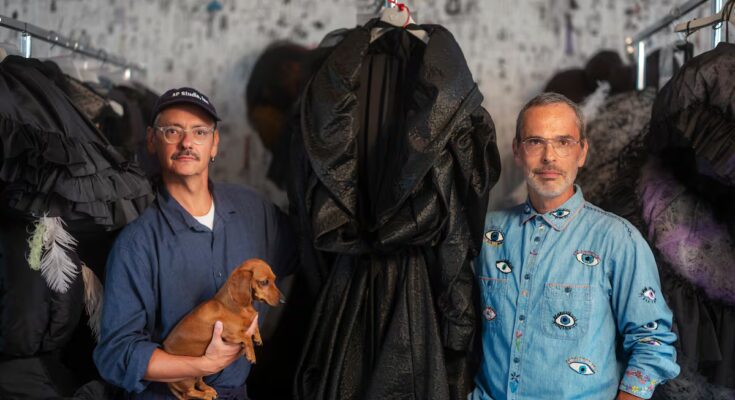For Viktor Horsting (Geldrop, 56 years old) and Rolf Snoeren (Dongen, 56 years old) the recurring comparison between fashion and art is not a disagreement but an opportunity. “Why can’t it be both?” they reply, with a sentence that is more of an answer than a question. It is in that confluent space that the duo finds the freedom to expand their particular vision of clothing. One who sometimes turns a dress into a painting, disconnects the garment from the body to test the limits of wearability – and the absurdity of the fashion world – or embroiders hundreds of bells onto fabric to turn sound into part of the design in a craft usually more occupied with what is seen. “Fashion can be much more than a dress hanging on a hanger,” they say, not in unison, but completing each other’s sentences.
In practice, there seem to be no limits. “If we can design it, the lab can do it,” they agree. Not even the holes in the cheddar cheese that pierced the collection’s hundred layers of tulle Cutting edge (2010) nor the clothes that boosted gravity in Late Waltz of stage capitalism (2023) resisted him. “More than simply creating exquisitely crafted garments, the duo has managed to demonstrate time and again how fashion can transcend mere clothing to become art, poetry and social criticism,” writes Roger Diederen, director of the Munich Kunsthalle, in the catalog of the exhibition that the German institution dedicated to them last year and which now arrives in Atlanta. 32 years after their first collection, “they continue to challenge our preconceptions of what clothing can be,” says the curator.
This is by no means the first show they have orchestrated. Indeed, they began by exhibiting their work – often closer to installation than exhibition – in galleries and museums. But what’s interesting about this one is that, instead of the chronological sequence typical of retrospectives, it explores the Viktor & Rolf universe through its recurring themes. Some more formal, such as flowers, tailored dresses or bows. Others are more conceptual, such as mimesis, limitations as a source of inspiration and the contradictions of the fashion industry. “I’m always amazed to see how certain ideas, certain obsessions, certain areas of interest continue to be reborn,” says Rolf. “The consistency is evident from start to finish,” says Viktor.
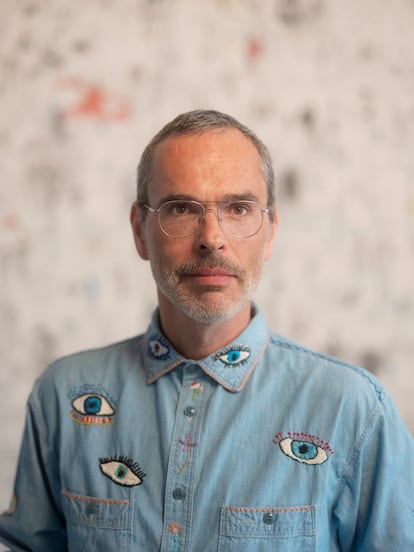
Calling the exhibition Fashion Statements is a statement in itself. “Every collection, every show, has a message.” But there is also a linguistic dimension linked to an unusual creative process that goes from semantic to visual. “We start with words and visualize them,” says Rolf. “Connecting fashion and language is our thing”. Sometimes word for word. Like when they make someone shout a three-dimensional “no”. leotard or write ““I want a better world” in a tulle dress. “We seek to expand the boundaries of what can be said, literally and metaphorically, with fashion,” they declare.
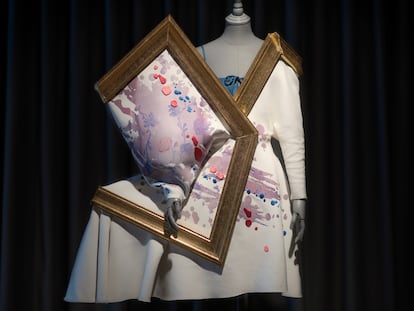
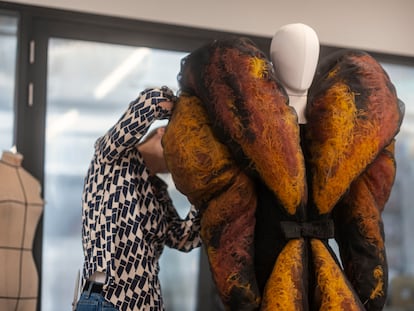
This conceptual perspective makes his creations more than relevant in the artistic context of a museum. They visited the Barbican in London, the Mori Art Museum in Tokyo, the National Gallery in Melbourne, the Kunsthal in Rotterdam. The Met in New York, the Palais Galliera in Paris and the Centraal in Utrecht have pieces by him in their collections. And more than one. “We like the idea that, unlike the fashion show, which is so exclusive, in a museum many more people can see it. Watch it from all angles,” says Rolf. “And he appreciates craftsmanship,” adds Viktor. “On a catwalk you live for 30 seconds. A lot of things get overlooked.” Although, with that performative quality that distinguishes their presentations, sometimes it is necessary to see them in action to understand their creations. To the point: the clothes Wearable art (2015) who, on stage, themselves – often part of the cast – removed the models to hang on the wall transformed into paintings; or the reverse Matryoshka game Glamor factory (2010), which began with Kristen McMenamy covered in several layers of clothing that designers removed and placed on different models, changing form and function as the wearer changed. “We use fashion to express ourselves. Just like an artist paints, composes or writes,” says Viktor. They still remember the time they flew in a dress from Japan to an exhibition in Paris. “The commissioner traveled with him, wearing his white gloves,” Rolf recalls. At one point during the assembly, Viktor reached over to place it, and the curator jumped to stand between the dress and the author, blurting out, “You can’t touch it, it’s a masterpiece.”

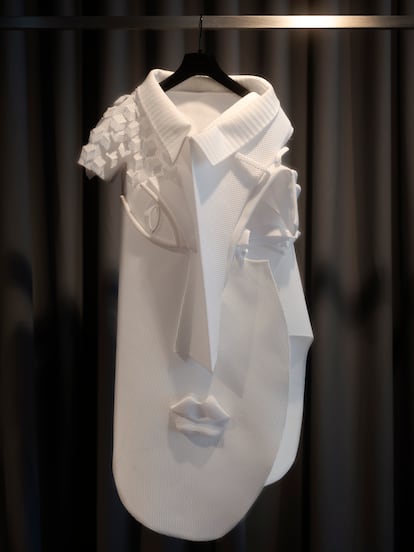
At this point it is not surprising to discover that they are both avid art collectors. When we enter their offices, a glass building overlooking the harbor in Houthavens, Amsterdam’s budding fashion district, we are greeted Rose, THE dachshund of Rolf and sculpture First wet dream (2019), by Justin Cooper: a wheelbarrow balanced on a shell, and a commentary on the tension of a tightrope walker who always seems on the verge of collapsing. It’s not the only museum piece in the building. There is also a table and chair set from Job Smeets. A Traccia coffee table by Meret Oppenheim. And a handful of its already famous dolls: dressed in miniature versions of the house’s couture creations – which often take longer to make than their life-size counterparts – they started making for an exhibition at the Barbican and now have 123 of them.
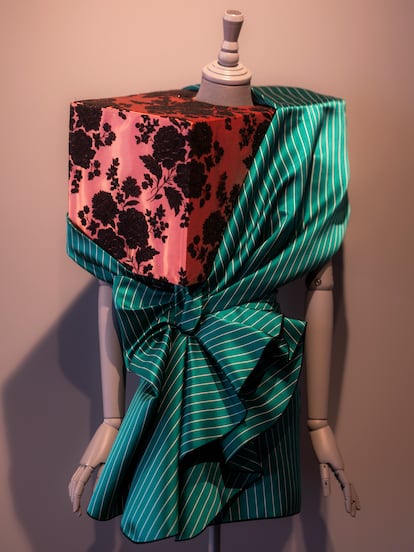

Their office, which they share, has a single table and a mess that, far from disturbing, stimulates curiosity. There are ceremonial dolls of the Ndebele ethnic group, crowded pencil holders and sketchbooks; various perfume bottles and samples; mountains of magazines; prints with Angry Birds drawings, spacesuits and feather dresses from the early 20th century; a couple of books and sketches on the floor on Napoleonic uniforms which, at the risk of creating spoilers, also dot a mood board.
—Is it true that Viktor and Rolf never argue?
—We don’t like that kind of heated energy.
They know no other way to work than together. And they have no desire to do so. “We often say one plus one equals three,” says Rolf. It has been like this for more than 30 years, when, after graduating from ArtEZ in Arnhem in 1992, they settled in Paris. They didn’t have any money, they worked and lived in a tiny apartment and everything seemed uphill. In 1993 they performed at the Hyères Festival and won the first three prizes. And again, nothing. The fashion world remained undaunted. In 1996, proving that what they do “is very autobiographical,” they turned frustration into momentum and changed the show with posters that plastered Paris in the middle of fashion week, orchestrating a symbolic strike against the industry’s systemic elitism.
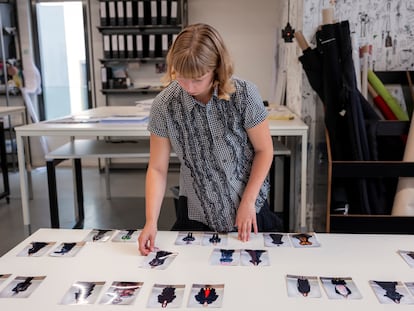
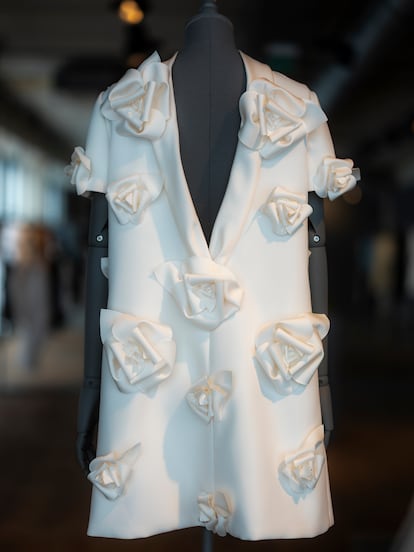
The situation has reversed Russian doll (1999), nine pieces placed on a model, Maggie Rizer, on a rotating platform. In total there were 70 kilograms of clothes. In reality it was a question of budget: there was no money for casting. The result of the combination of ingenuity and lack of resources. But by then they had captured the industry’s attention.
By then they had returned to Amsterdam. “We like to have one foot in the system and the other outside.” Living off the beaten path allows them to have a pure perspective. “Paris is very stimulating. Even difficult,” says Viktor. “But it will always be our home of fashion. That’s why we continue to show there.” The last time was this July, with the autumn-winter sewing, Angry Birds. The next one, which they will present in January, “we should start now,” says Viktor, without any urgency in his voice. Pacing is a hot topic in the industry. It was the reason why, 10 years ago, they decided to focus on sewing and ditching ready to wear. “With its fast pace, incessant deadlines and fierce competition, it has begun to become creatively restrictive,” the statement read. “It was a exhaustion”, Rolf states.
That they now take it back is another statement of principles.
—What has changed?
—In the sector, nothing. In our way of working, everything.
Their new proposal is more limited, with fewer garments, fewer collections, no fashion shows and everything made “in house”. “Sending sketches to a factory just to meet deadlines didn’t work for us.” The approach is to take the ideas they explore in sewing and take them to the streets “to reach a wider audience”. Yes, business matters. “It’s not a hobby,” says Viktor.
Neither his particular approach nor his refusal to participate in the circus of trends are incompatible with commercial success. In this case, its multimillion-dollar perfume division. Their first flirtation with their own perfume dates back to 1996, when, in the form of an installation, they represented their dreams and ambitions as designers at the Torch Gallery in Amsterdam. There was the catwalk, the shop, the photo shoot and, of course, Le Parfum: a fragrance that no one knows what it smells like in an unopened bottle and which will become his signature trademark. They manufactured 250 units, of which little is known where they are located. They have one. “And I think my mother has another one,” Viktor says. Today there are seven franchises and a hundred versions. But Flowerbomb – the first, which turns 20 this year – remains the unbeatable bestseller. “Partly,” says Rolf, “because commercial success wasn’t what we were looking for when we created it. And in a way that’s the key to success: do what you want.”
